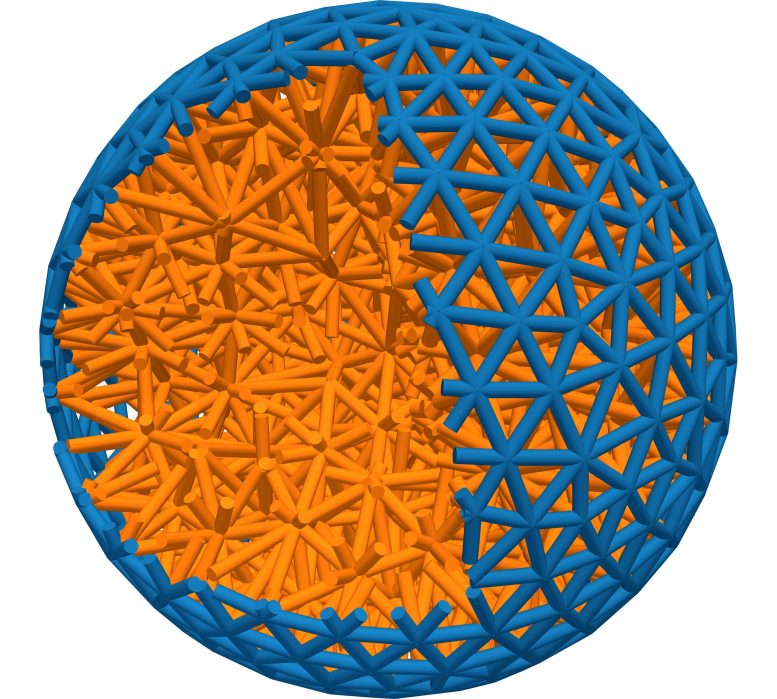Physicists have discovered a new way to coat soft robots in materials that allow them to move and function in a more purposeful way. The research, led by the University of Bath, is described in a paper published on March 11, 2022, in Science Advances.
Authors of the study believe their breakthrough modeling on ‘active matter’ could mark a turning point in the design of robots. With further development of the concept, it may be possible to determine the shape, movement, and behavior of a soft solid not by its natural elasticity but by human-controlled activity on its surface.
Wrapping an elastic ball (orange) in a layer of tiny
robots (blue) allows researchers to program shape
and behavior. Credit: Jack Binysh
It is hoped that active matter will lead to a new generation of machines whose function will come from the bottom up. So, instead of being governed by a central controller (the way today’s robotic arms are controlled in factories), these new machines would be made from many individual active units that cooperate to determine the machine’s movement and function. This is akin to the workings of our own biological tissues, such as the fibers in heart muscle.
Using this idea, scientists could design soft machines with arms made of flexible materials powered by robots embedded in their surface. They could also tailor the size and shape of drug delivery capsules, by coating the surface of nanoparticles in a responsive, active material.. This in turn could have a dramatic effect on how a drug interacts with cells in the body.
Work on active matter challenges the assumption that the energetic cost of the surface of a liquid or soft solid must always be positive, because a certain amount of energy is always necessary to create a surface. READ MORE...

